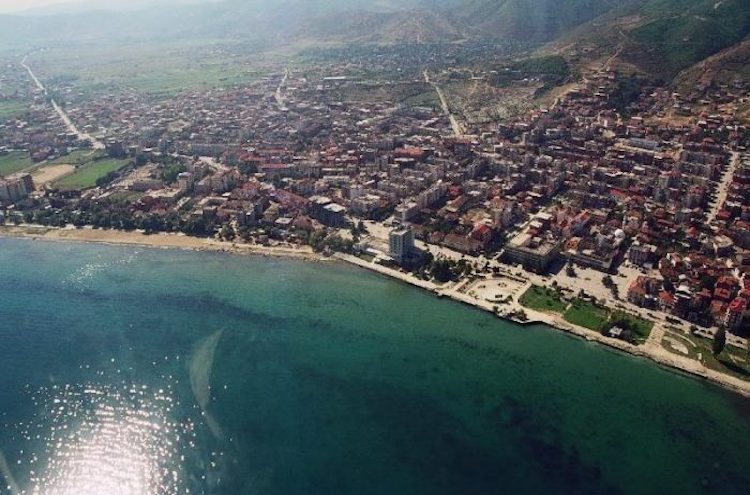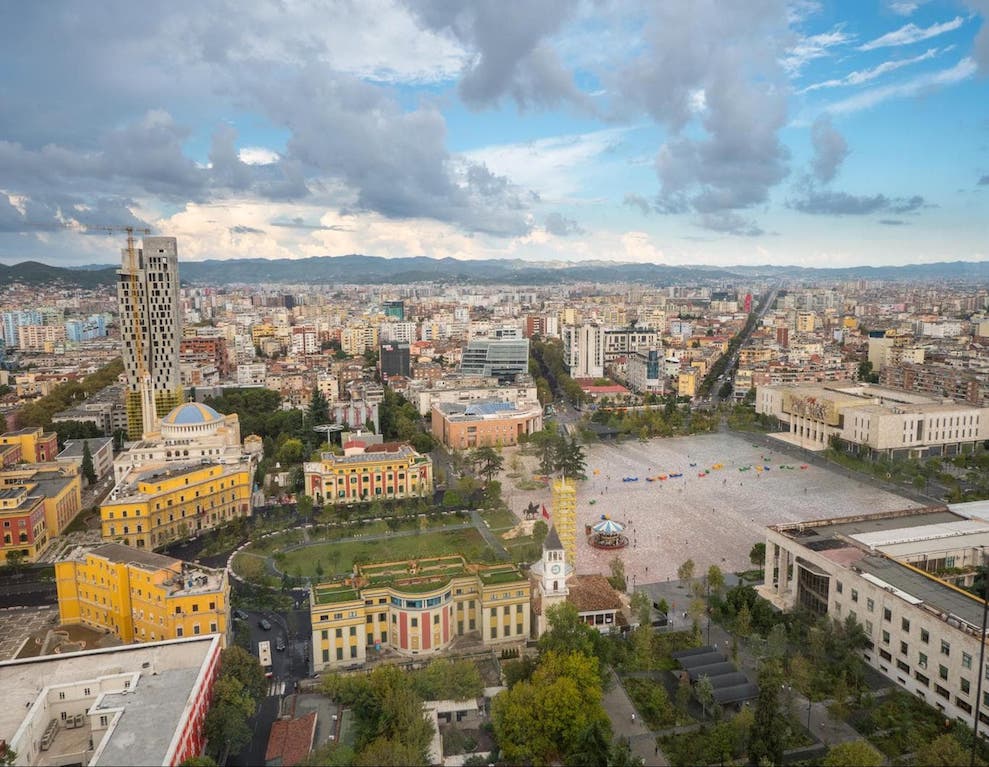
Albanian Cities: Top 10 Cities to Visit in Albania
Albanian cities, apart from the capital of Tirana, are relatively small. Thus, they can offer adequate modern amenities to inhabitants while still preserving the charm of their cultural heritage. There are numerous Albanian cities you can visit: here are our top ten choices.
1. Tirana
Tirana is the capital and largest city of Albania. This vibrant city has a lot to offer, from its public building mixing architectures of different eras to authentic restaurants, pubs, cafes, and posh nightclubs. Sheshi Skënderbej is Tirana’s main square and gathering place. It’s conceptualized as a vast pedestrian agora surrounded by architectonic cultural monuments such as the Et’hem Beut Mosque, the National Museum of History, and 35 meters (115 feet) high old Clock Tower (“Kulla e Sahatit”) strangely similar to such constructs in Venetia.
Also in central Tirana are the imposing Opera House with an extended horizontal shape braked by numerous steep columns, National Bank of Albania, and other institutional buildings. However, since the 1990s when the country overthrew the dictatorship regime and opened its borders, Tirana developed and expanded exponentially, turning into a polycentric urban area. From its buzzing streets to the charming hills and eastern mountain range, the city of Tirana offers visitors an authentic kaleidoscopic atmosphere.

2. Shkodra
Shkodra is the largest, most important city of northern Albania. It holds a unique position at the confluence of three rivers and near the shores of Lake Shkodra, the largest in the Balkans. Shkodra is a city with a rich history, one of the oldest in the nation, dating back to some two thousand four hundred years ago. In the imposing hill rising above the city and acting as its natural acropolis still stands an amazing large castle where each era and different civilizations have left their mark: Illyrian, Byzantine, Venetian, medieval Albanian, Ottoman: all blended together in one authentic complex.
From the altitude of the castle, visitors can enjoy the vastness and splendor of the Lake Shkodra, the meandering rivers joining from below, the laid back city on its foot, the open plain, and the high mountains over the horizon. Standing on the shadow of its castle, Shkodra had developed along an axis represented by a long pedestrian avenue with low tiers houses, bars, coffees, taverns, and museums. A visit into the Marubi National Museum of Photography is a must with a collection that puts the city as the first to shoot photographs in the Balkans. Theater Migjeni is another event hub not to be missed. Apart from being a beautiful site in its own right, Shkodra is also the gateway into the mystic highlands of the Albanian Alps.
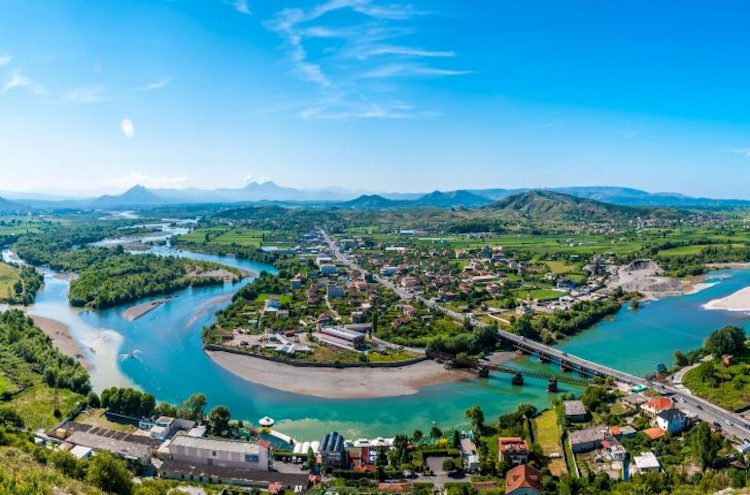
3. Vlora
Vlora holds the key to your journey into the southern Albanian Riviera. Located in the meeting point between the Adriatic and the Ionian Sea, Vlora is among the largest coastal cities in the country. This seaside city gets a huge attention during summer when its beaches, boulevards, streets, and seafront promenades get crowded with vacationers and travelers.
Vlora is also the city where the independence of Albania was first declared on 28 of November 1912, and the house where the flag of the independent state was raised still stands as the National Museum of Independence. From Vlora you can also visit many natural wonders such as the Narta lagoon where the beautiful monastery of Zvërnec is or the impressive Llogara Mountain range that rises high over the amazing southern Riviera, Karaburun peninsula, and the father Sazan and Ionian islands.
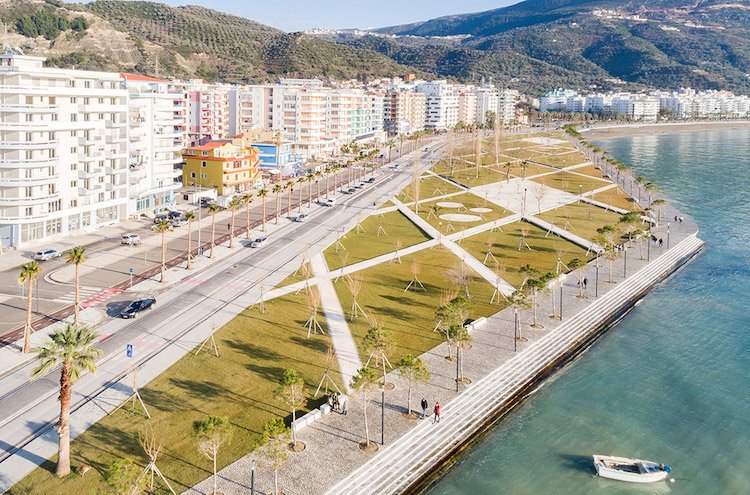
4. Berat
Berat is the nation’s symbol of religious and cultural harmony. The authentic architecture and layout have sealed its position in the list of UNESCO World Heritage Sites. Beautiful houses with white walls, tiered reddish roofs, and multiple windows rise up the green hills along narrow iconic alleys and terraces. The neighborhoods stretch even within the premises of the old castle topping the area. Meanwhile, the majestic Osum River meanders below Berat adding a soothing natural beauty to a city rich in history.
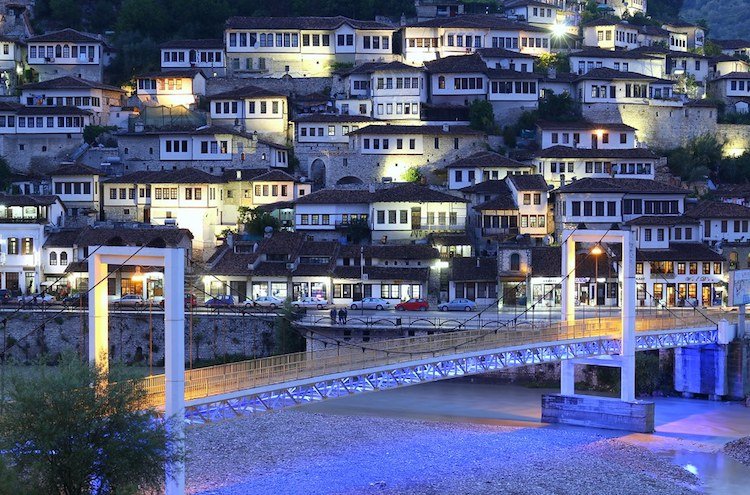
5. Përmet
Përmet is an authentic small city in the south of Albania. It was once the avantpost of Albanian Renaissance Movement represented by famous personalities and patriots such as the Frashëri brothers. Currently, the site is only a small town but with an exceptional and inspiring natural beauty. The clean emerald waters of the Vjosa River pass by the even cleanier town of Përmet, adapting its flow to the slow rhythm of the city’s life. The green parks and predominant flowery gardens have given Permet the nickname “the city of flowers”.
The first thing the visitors notice once in Përmet is a large natural rock near its center resembling some giant meteoric piece. On top of the rock, visitors can enjoy an aerial view of the city, the mountains, the Vjosa river, and the surrounding where many activities such as hiking, climbing, rafting, mountain biking, and thermal bathing take place. The food prepared and served in Përmet is also another added value using fresh local ingredients such as cheese and honey.
When in Permet, try the traditional “gliko” (a dessert made of fresh fruits) and a glass of local wine or a shot of “raki” (a local alcoholic drink) in the town popular for preparing the best such drinks in Albania.
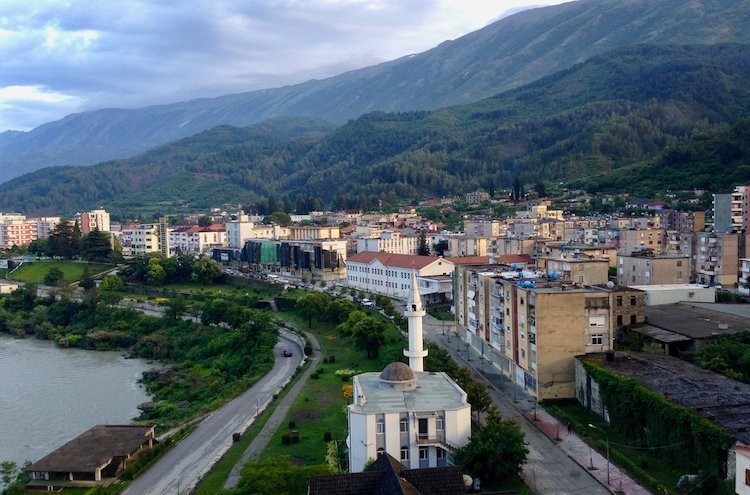
6. Korça
Korça is rightly considered as the cultural treasure of Albania. Located in a rich plain southeast of the country, the city is known for its rich calendar of festivals including among others the largest carnival gathering and the famous beer fest.
You can expect to visit many interesting museums in Korça, the city where the first public school in Albanian language was opened. These museums include the Prehistoric Museum, the House-Museum exhibiting works of the painter Vangjus Mio, Gjon Mili Photography Museum, the Museum of the Oriental Art “Bratko”, and the fantastic National Museum of Medieval Arts.
Korça is often referred to as Albania’s Little Paris because of its intricate alleys, romantic atmosphere, soothing sounds of the local ballads or “serenata” (serenades), small lined-up villas with their small gardens, and historic public sites.
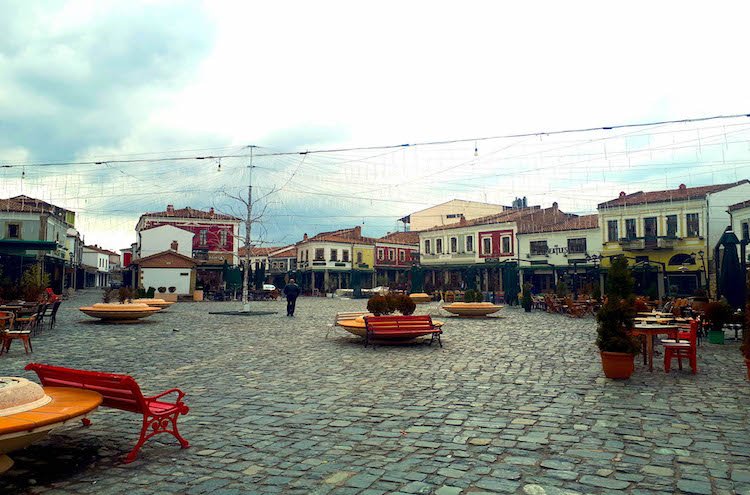
7. Gjirokastra
The city of Gjirokastra is one of the most authentic cities in Albania. Located in southern Albania, the city originates from the IV-th century C.E. and has inhabited without interruption since then. The intensive use of stones in this city’s streets, houses, walls, and alleys have rightly given Gjirokastra the nickname “the Stone City”. The dominant part of the city is its castle, the largest in the country. The way into the uphill castle is all paved into cobblestones, running through entire neighborhoods of Ottoman-style inner-city houses, majestic villas all in stone, old crafting shops, and bazaars.
When inside the castle, tourists can visit the Museum of Weapons which exhibits items of warfare related equipment from Prehistoric times to WWII period. In the opening outdoors within the castle, visitors can better view from a distance the houses of renowned local families such as the Zekati, Skëndulaj, Angonati, Çabej, Kadare, and many others. Visiting just one of such houses is like visiting a separate distinctive museum with a rich local history.
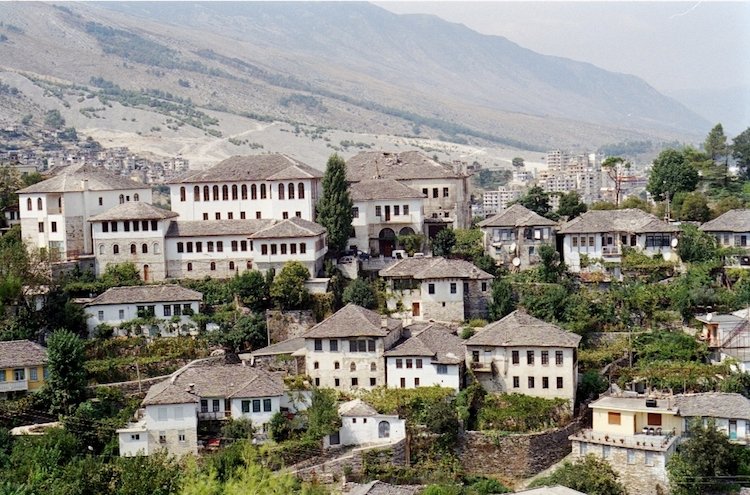
8. Kruja
Located just 30 kilometers (18.6 miles) from the modern capital of Albania, Kruja is the ideal getaway for tourists in a hurry. The town of Kruja stands on a rocky peak belonging to a mountainous range of Central Albania, some five hundred meters above sea level, strategically controlling the low lying valleys fronting the Adriatic Sea and relying on natural protection from the much higher peaks eastwards. Kruja was in medieval times the most important stronghold of the Albanians and the center of an Albanian state as early as the XII-th century.
Kruja’s castle, with some of its old walls and towers still standing, led during the XV-th century a remarkable resistance against the Ottomans. Organized by the genial skills of their general Gjergj Kastriot Skënderbeu, the Albanians along with their allies repelled three massive Ottoman sieges from Kruja in a time span of only seventeen years. Currently, the town has preserved its medieval glamour best sensed in its bazaar, castle complex where a national museum and another ethnographic museum are, as well as the overall dramatic yet beautiful nature of the surrounding nature.
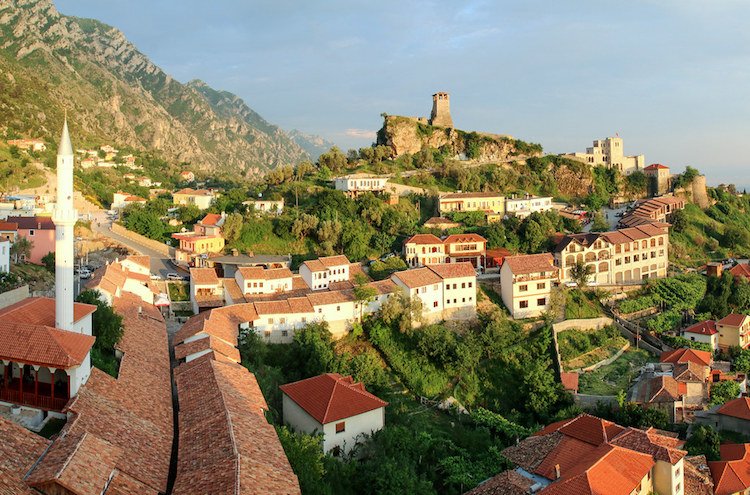
9. Elbasan
Elbasan is a simple city where the complex cultural heritage combines with the recent urban developments affecting the locality. This city was once only a small castle, apparently a field fort controlled by Romans, then it was used, fortified, and expanded substantially as a military avaunt post by the Ottomans, until it eventually took its current shape. Elbasan castle’s high walls and towers are still standing, covering entire fields and including within them entire neighborhoods.
Elbasan hosts one of the largest gatherings each year in Albanian, on March 14 where countless people from all around the nation flood the city to attend Summer Day’s festivities, a seemingly very old archaic celebration. The delicious and traditional dessert called “ballokume” is the main protagonist of this festival. Elbasan is only some forty three kilometers drive from the capital of Tirana making it a convenient destination for all tourists.
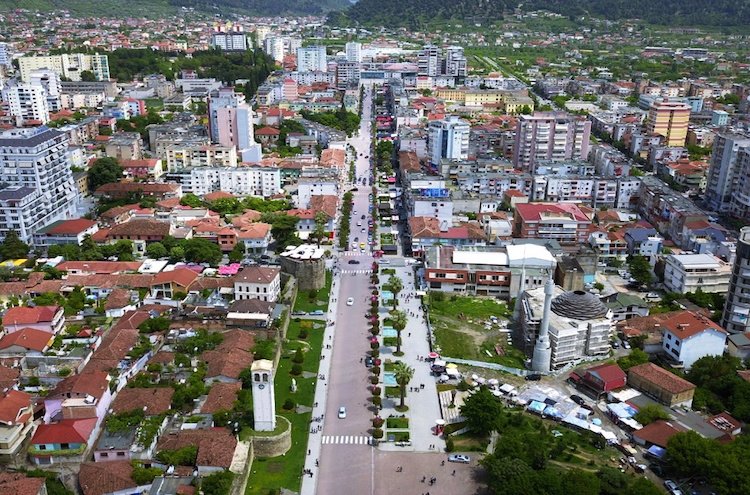
10. Pogradec
The city of Pogradec rises over the shores of Lake Ohrid in southwestern part of Albania. The location is a hot spot for “family tourism” and aspiring artists. Along the lakeside promenades a range of restaurants, clubs, and hotels serve and accommodate tourists all-year round. Not far from here is the town of Lin where ancient mosaics resembling those of Durrës are found. Pogradec is often valued for its refreshing climate and clean air, characteristics that attract locals who want to escape from the much more crowded and dense urban locations.
